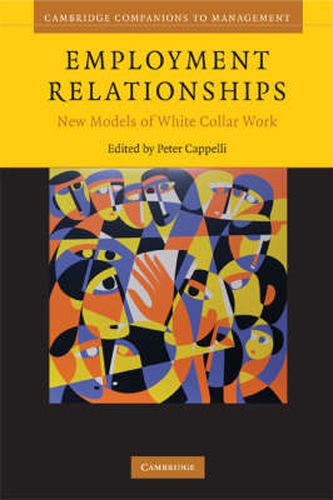Readings Newsletter
Become a Readings Member to make your shopping experience even easier.
Sign in or sign up for free!
You’re not far away from qualifying for FREE standard shipping within Australia
You’ve qualified for FREE standard shipping within Australia
The cart is loading…






The second half of the twentieth century witnessed a quite dramatic shift in the nature of white collar employment, from lifetime tenure, often in a very hierarchical work structure, to a new model defined by flatter organizations, job insecurity, shorter tenures, declining attachment between employer and employee, and contingent work. Managing employment relations has become an issue of huge strategic importance as businesses struggle to respond to the pace of change in management systems and working practices. Employment Relationships: New Models of White-Collar Work traces developments in employment arrangements drawn from a number of business contexts. These include the rising role of outside hiring and lateral moves in shaping and managing careers, increased career uncertainty, and much greater variety in organizational structures - even within industries and professions - as employers struggle to meet the diverging demands of their product markets.
$9.00 standard shipping within Australia
FREE standard shipping within Australia for orders over $100.00
Express & International shipping calculated at checkout
The second half of the twentieth century witnessed a quite dramatic shift in the nature of white collar employment, from lifetime tenure, often in a very hierarchical work structure, to a new model defined by flatter organizations, job insecurity, shorter tenures, declining attachment between employer and employee, and contingent work. Managing employment relations has become an issue of huge strategic importance as businesses struggle to respond to the pace of change in management systems and working practices. Employment Relationships: New Models of White-Collar Work traces developments in employment arrangements drawn from a number of business contexts. These include the rising role of outside hiring and lateral moves in shaping and managing careers, increased career uncertainty, and much greater variety in organizational structures - even within industries and professions - as employers struggle to meet the diverging demands of their product markets.